Gma's and Gpa's Great Adventures
Buenos Dias!
4am Let’s GO! Max and Whitey have done this 18 times before, so we are in very good hands. Navigating the Panama Canal can be challenging. Though Panama Canal advisors are known for their thorough professionalism and skilled navigation, responsibility for safe navigation lies with the ship’s captain and crew. Many transits take 2 days, with a night spent anchored or on a mooring ball in Lake Gatun. We are scheduled to do the full transit in one day. So here we go!
RUTH METZ
32 chapters
29 Jan 2023
The Transit
Panama Canal
Buenos Dias!
4am Let’s GO! Max and Whitey have done this 18 times before, so we are in very good hands. Navigating the Panama Canal can be challenging. Though Panama Canal advisors are known for their thorough professionalism and skilled navigation, responsibility for safe navigation lies with the ship’s captain and crew. Many transits take 2 days, with a night spent anchored or on a mooring ball in Lake Gatun. We are scheduled to do the full transit in one day. So here we go!

5:18 Edwardo, our Panama Canal advisor, arrives on Nutmeg (dropped off by boat).
5:24 Anchor is UP! We are on our way…
5:58 Crossing under the ATLANTIC BRIDGE. No waiting for the bridge to open here, there’s plenty of room for Nutmeg to get under. Our mast is 71’ – the bridge clearance is 246’. Guess we can get a bigger boat, Gpa!
As we approach Gatun Lock we raft up to a Iris, a monohull with several people aboard, including their required advisor. It is still quite dark out. We wait for Hafnia Topaz, a large oil/chemical tanker flying under the Marshall Islands flag, and it’s tug boat, to enter the lock first. Once given the go ahead, we motor in with Iris at our side.


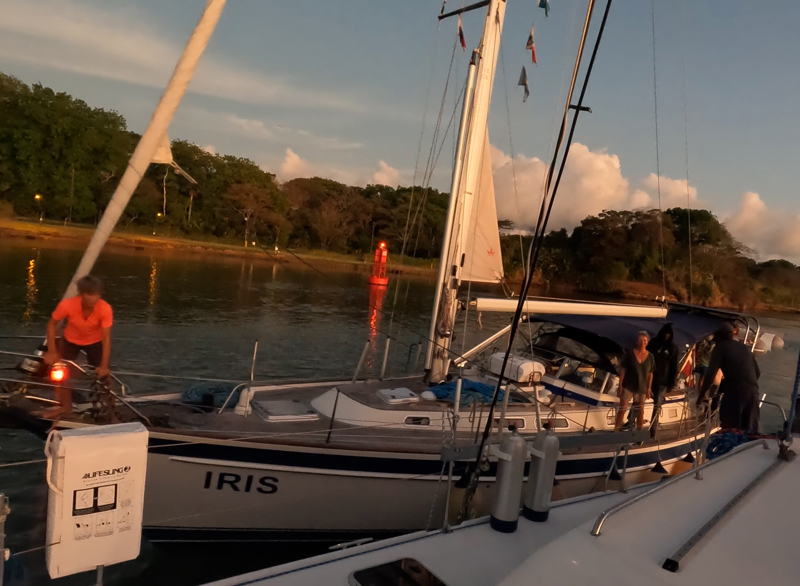
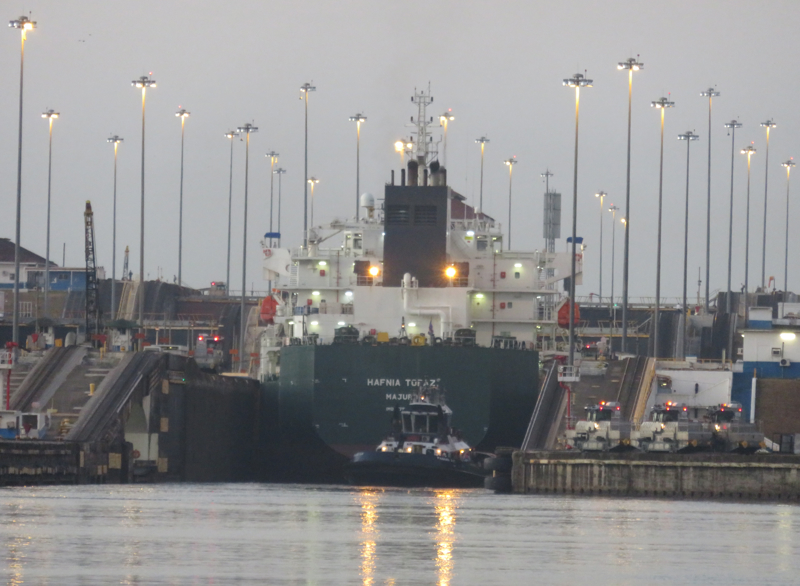
6:30 We enter GATUN LOCK, a 3-step flight with 3 independent lanes that raise or lower ships 85 feet above sea level. Monkey fists are thrown down from the canal workers to our line handlers who then attach a line from Nutmeg which is then pulled back up and attached to a canal cleat. The heavy gates are closed and, as the water is raised – or lowered – the line handlers tighten - or loosen - the lines to keep the boat centered in the lock. As the boats motor forward to the next "step", the dock workers walk the lines forward with us and cleat us again.
The large ships are guided by “mules,” train-like locomotives on tracks connected with cable to the ships. The tug boats are also along to push and guide the larger ships as needed. (Originally actual mules were used & the name stuck.) Large ships will use 8 mules, 2 at the bow and 2 at the stern, both port and starboard. The mules have powerful winches to tighten or loosen the cables as needed. Forward motion is actually powered by the ship’s engines, not the mules. Mules are not used on the new expansion “super freighter” locks. When the gates are closed the workers actually walk along the top of the gates to go from side to side.
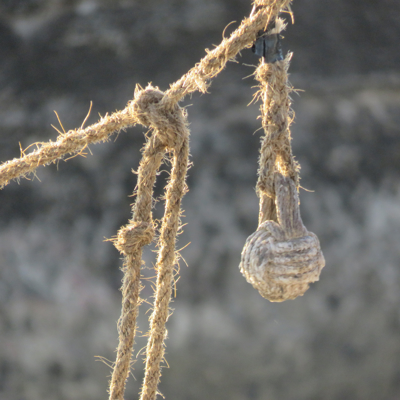
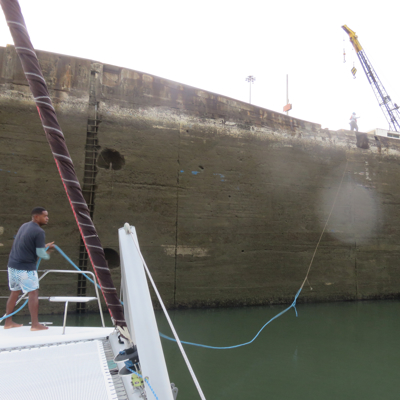


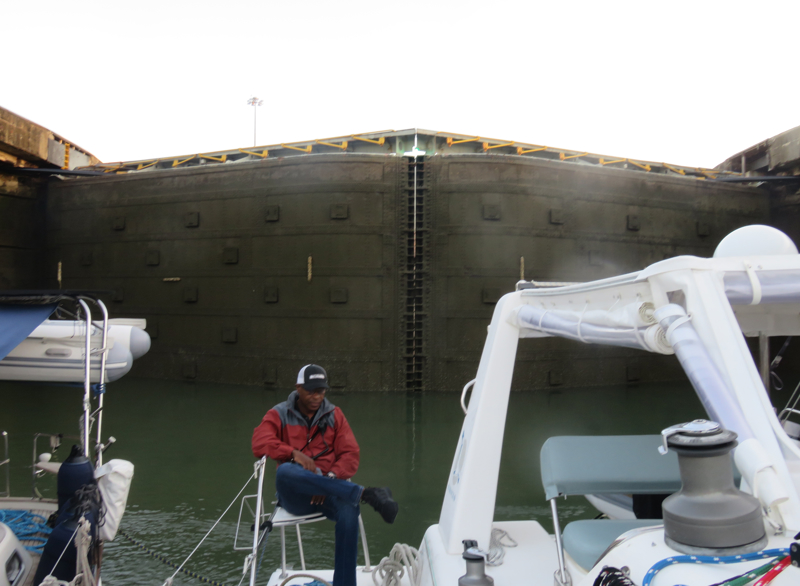
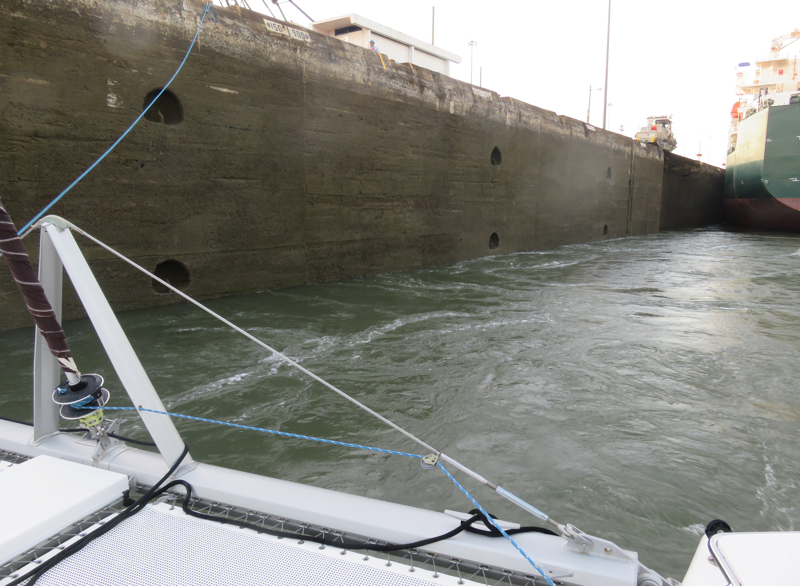
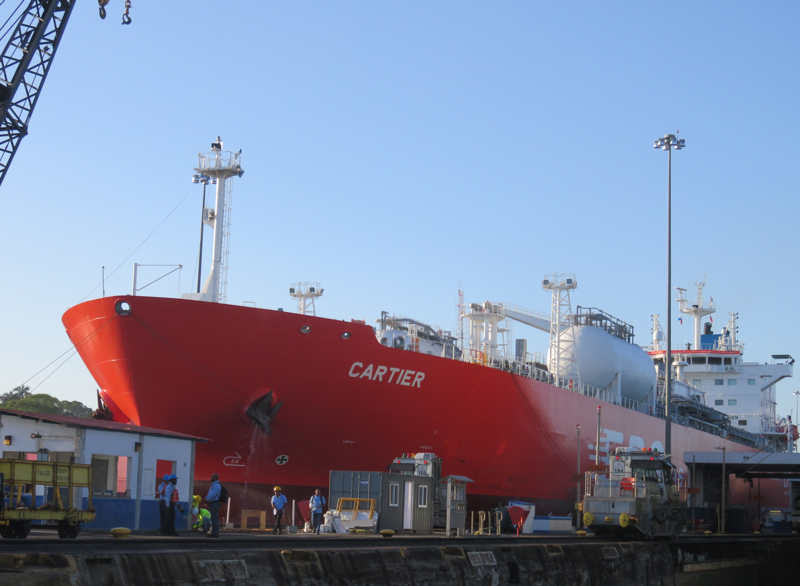

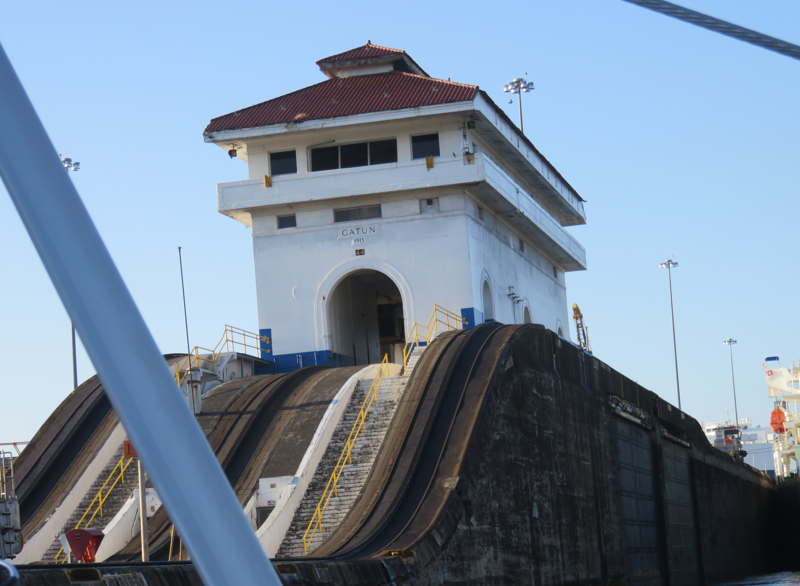

8:20 Each end of the lock has heavy double gates for safety. Open sesame – and we are in GATUN LAKE! What an amazing lake. The first thing we see are lots of large ships, some moving along and more anchored. Shortly after we enter we see the large Chagres River dam, a vital part of creating this lake and the Panama Canal. We follow the marked channel which sometimes takes us close to a shore, other times “out in the middle.” The lake is very calm and pleasant to motor through. The palm trees remind us that we are actually traveling through jungle. There are numerous islands and interesting areas off to the side which would be fun to explore in a dinghy or kayak – if only we could. We meet more large ships but few – if any? – other cruising sail boats.
There is very limited development along the canal. Barro Colorado Island, in the middle of the lake, is managed by the Smithsonian
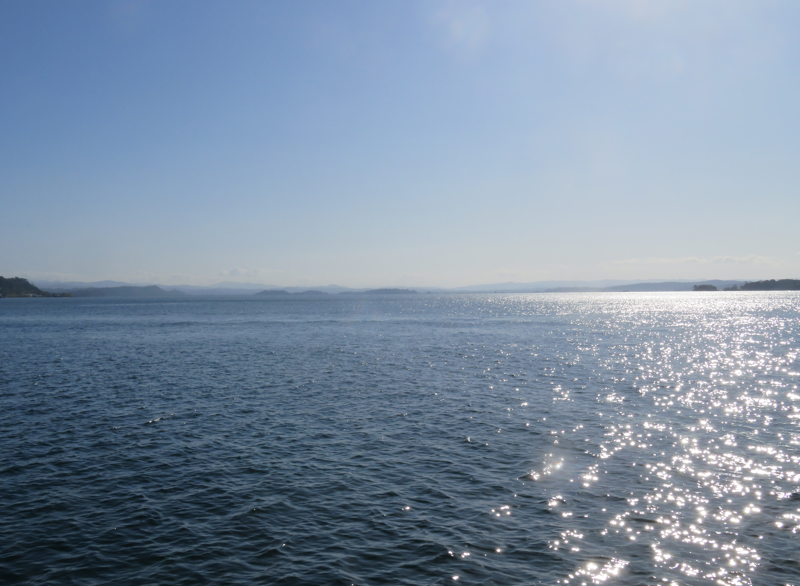
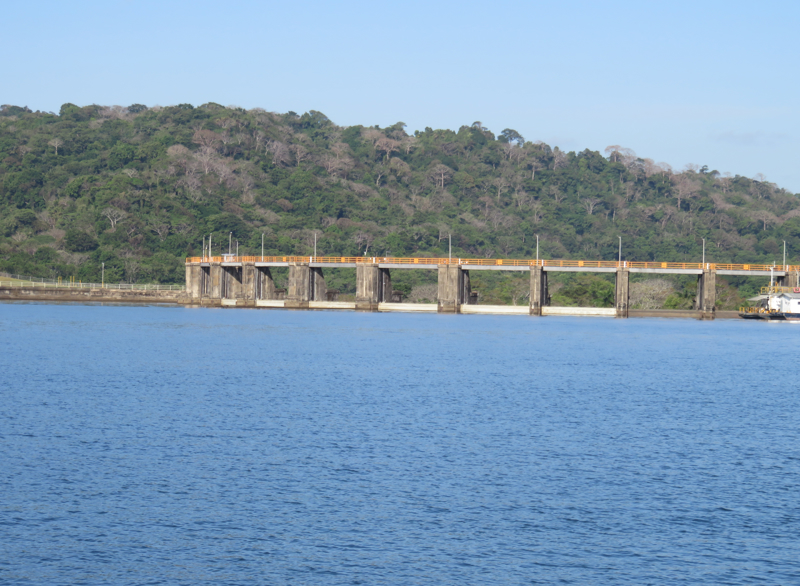


Institute, & is the most intensively studied tropical forests in the world. Gamboa is a small town at the intersection of the Changres River and the end of Gatun Lake portion of the canal, built to house employees of the Panama Canal and their families.
11ish To our port is GAMBOA and the Gamboa bridge over the Changres River, the source of the freshwater that’s coming from the Darien rain forest. This bridge is actually part of the Panama Canal Railway which parallels the Panama Canal providing freight and passenger service linking the Atlantic with the Pacific Ocean. Gamboa, just 17 miles from Panama City, now has a rainforest resort, the Soberania National Park and is home to caimans, crocodiles, iguanas and several hundred bird species – one of the premiere bird watching sites in all of Central America.
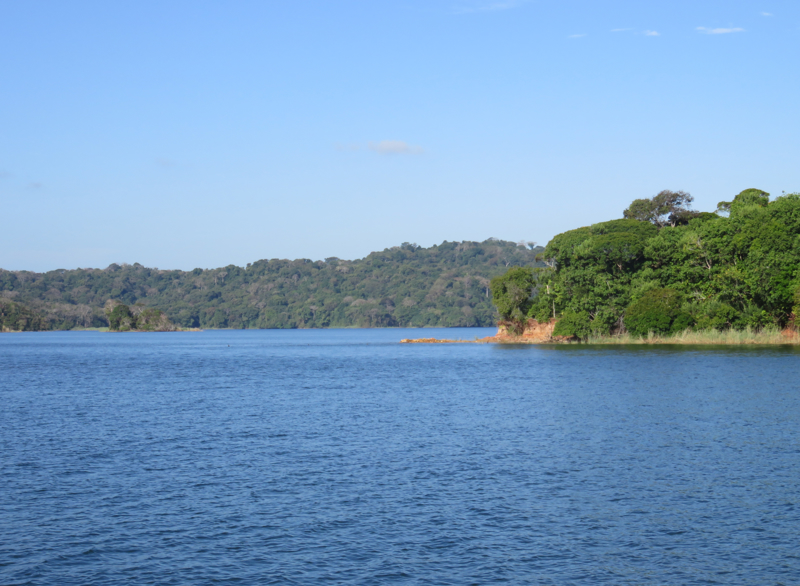
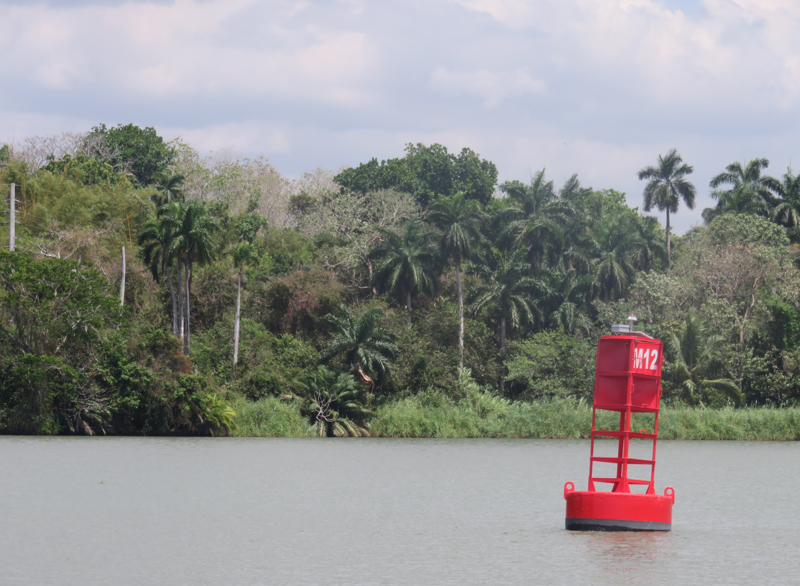
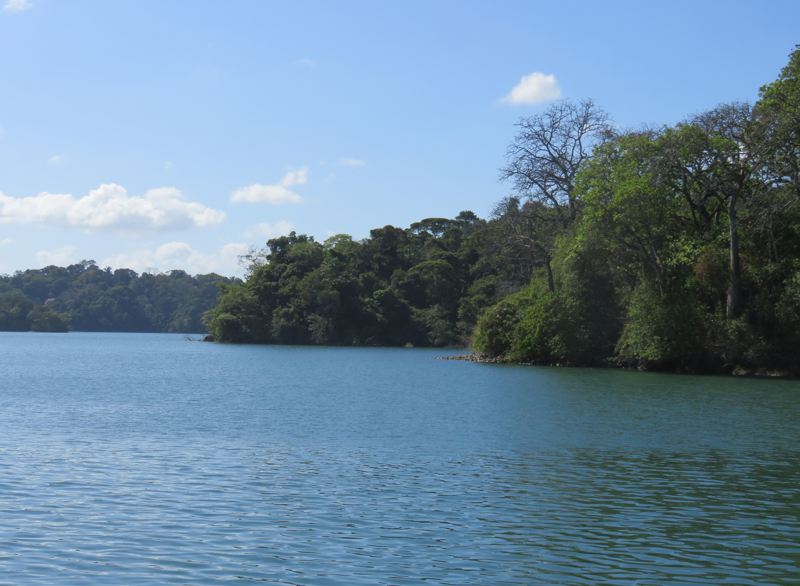
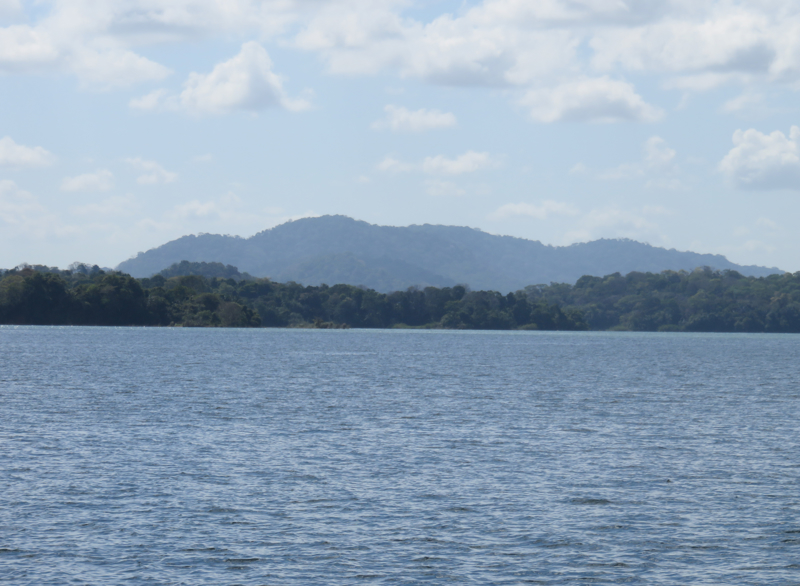
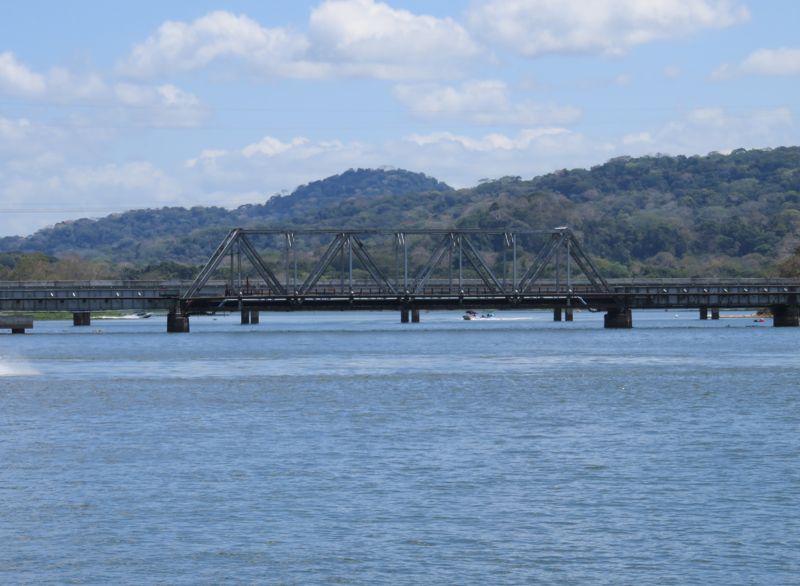
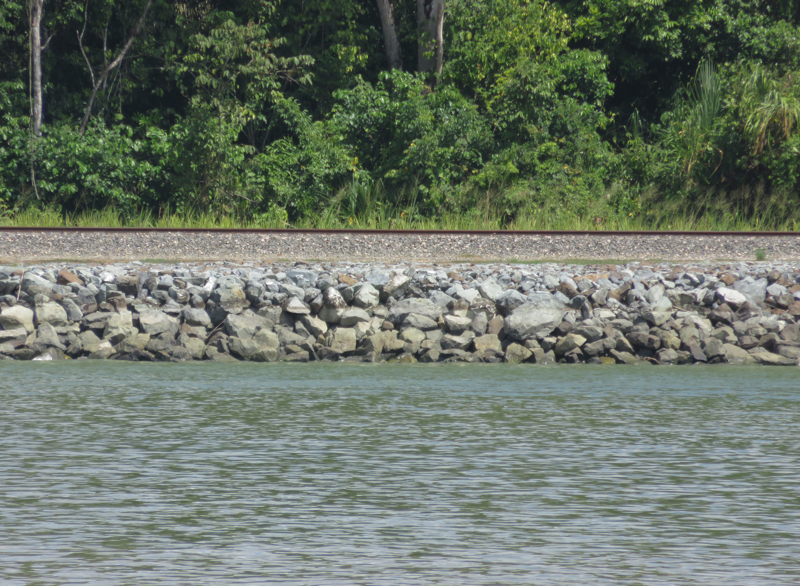

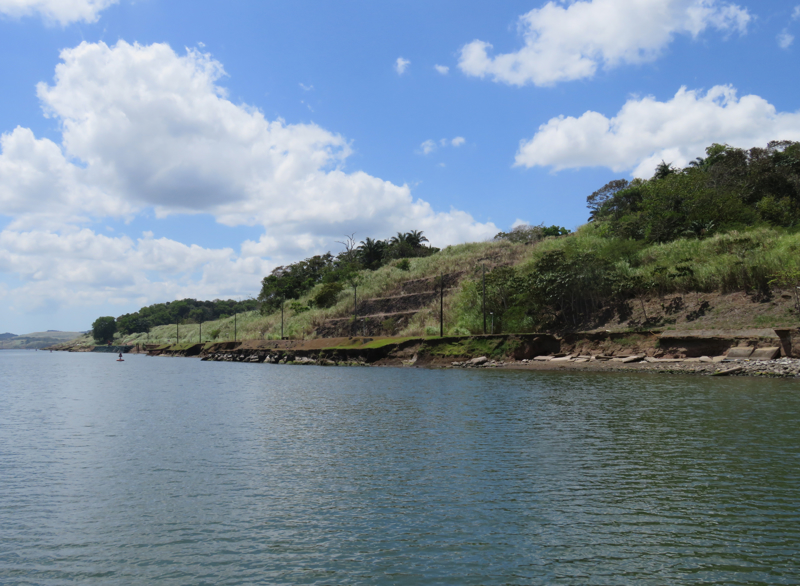
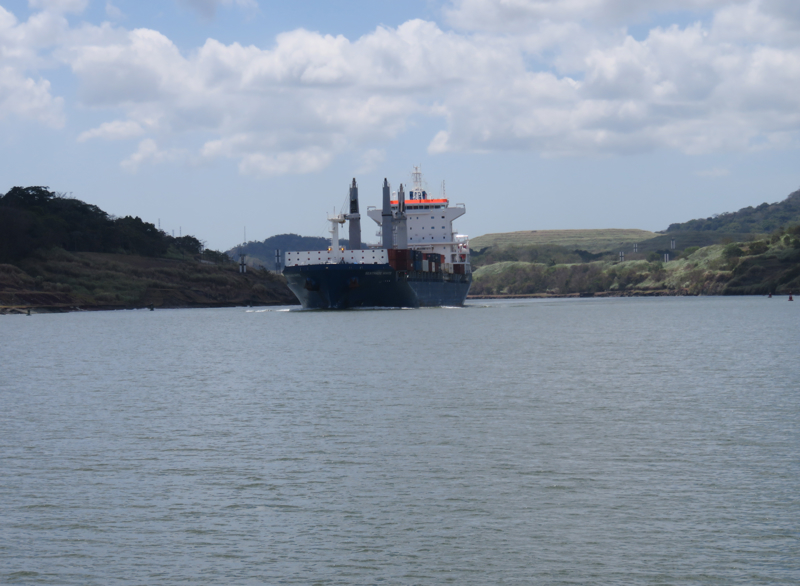
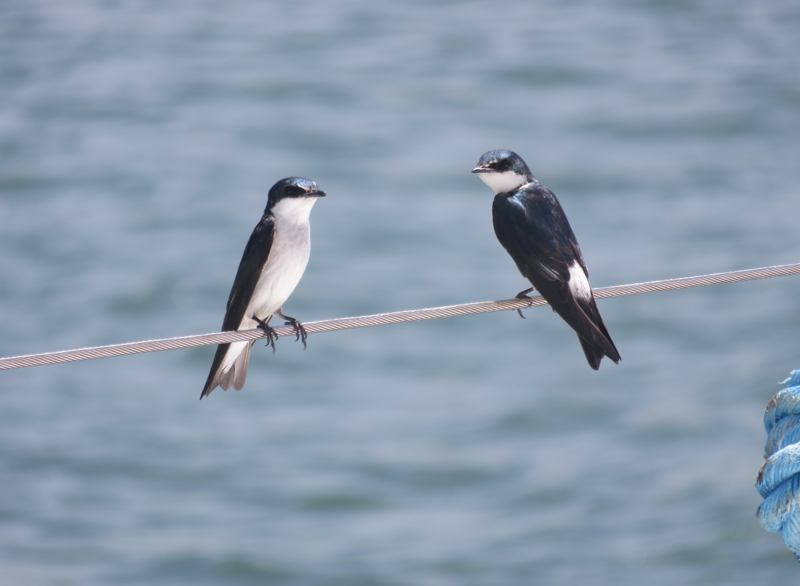
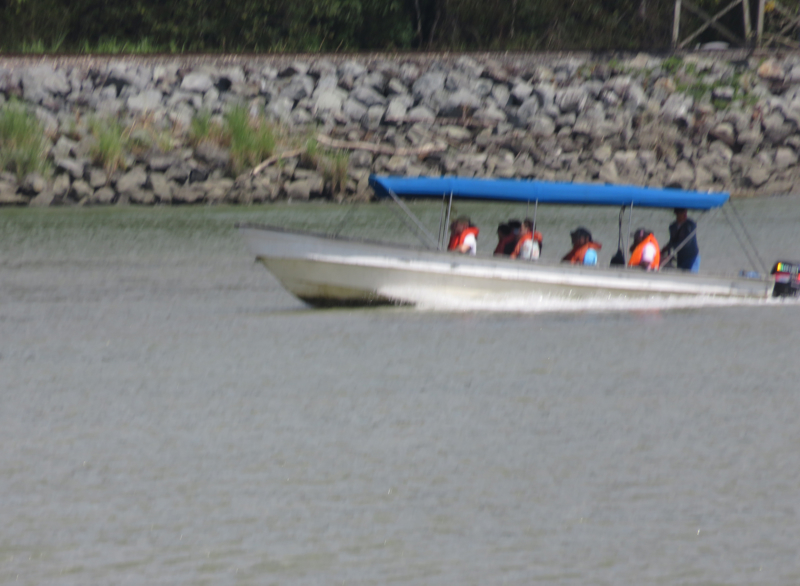
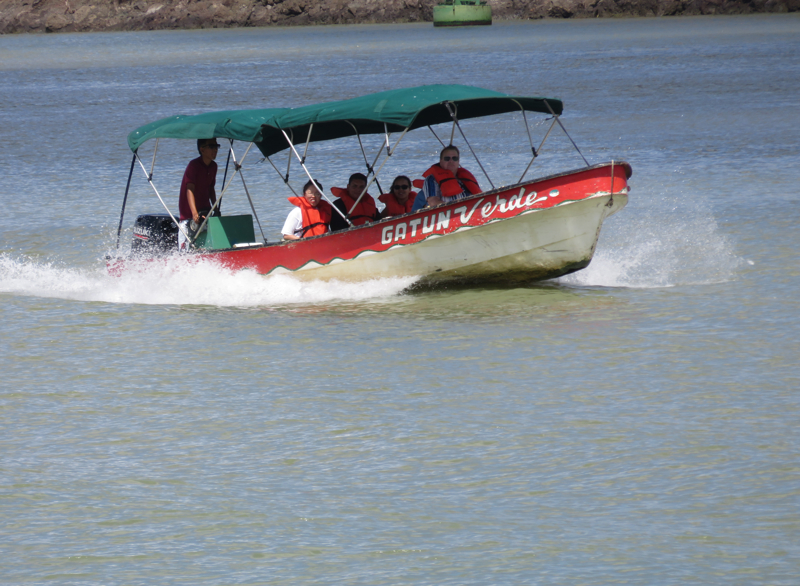
At this point, we also enter the ‘CULEBRA CUT’ previously known as the ‘GAILLARD CUT.’ This narrow stretch of the Panama Canal cuts through the continental divide in Panama, linking Gatun Lake with the Pacific Ocean. Unstable soil and rock continue to make it a challenging section of the entire canal, with continuous repairs and improvements including cutting back hillsides, terracing, and dredging. Edwardo spotted a crocodile along the shoreline. Some birds took advantage of a free ride. We also see LOTS of small fishing boats along “the cut”– not sure just how this works – but seems fishing tourism is live and well in this area.
NOON About 8 miles from Gamboa we cross under the CENTENNIAL BRIDGE. Opened in 2005 when new highways leading to it were finished. We raft up with Iris again just outside the next lock.

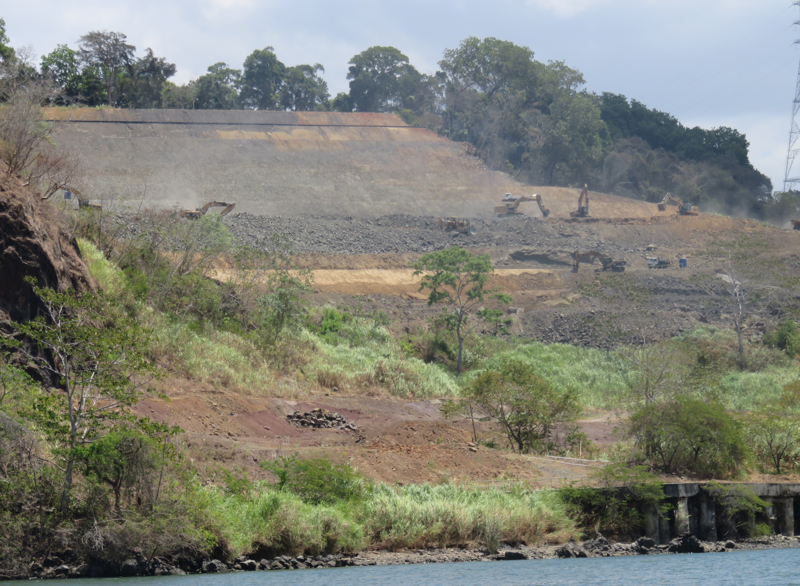


12:30 PEDRO MIGUEL’S LOCK, a single-step flight that lifts or lowers ships 31 feet. Whitey motors Nutmeg and Iris to the front of the lock, monkey fists are thrown to us and lines are secured. We now wait for “Hafnia” and its tug boat to enter. Plenty of time for lunch. Max prepared a feast of chicken and a Ziti bake. Edwardo, Alex and Manuel were hearty eaters. iQue’ rico!
1:53 After a fairly short passage between locks, with Iris attached to our side, we arrive at the MIRAFLORES LOCKS. This is a 2-step flight that lifts or lowers ships 54 feet. Note the difference between the before and after water level with Hafnia in the lock- and how little side clearance she has - that's a tight squeeze. There is a crowd of people at the visitor center watching boats come and go thru the lock. Aren’t we lucky to be ON a boat IN the lock?!
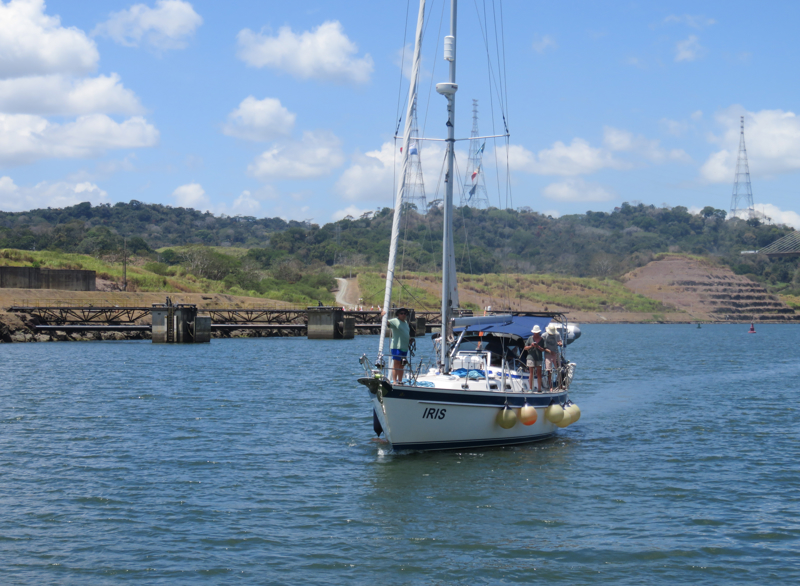
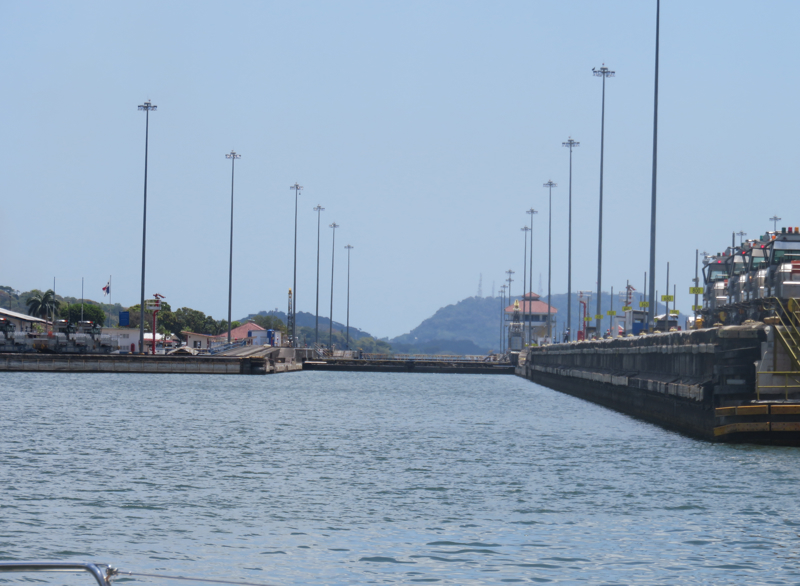
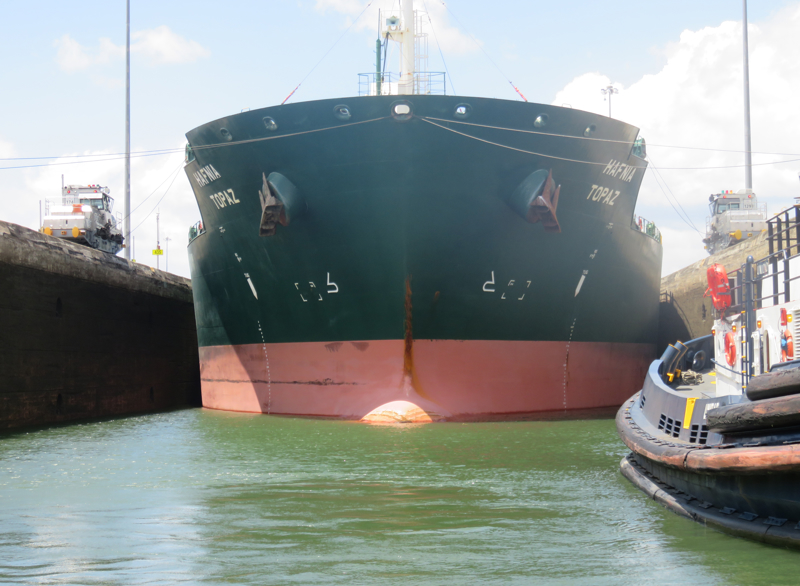
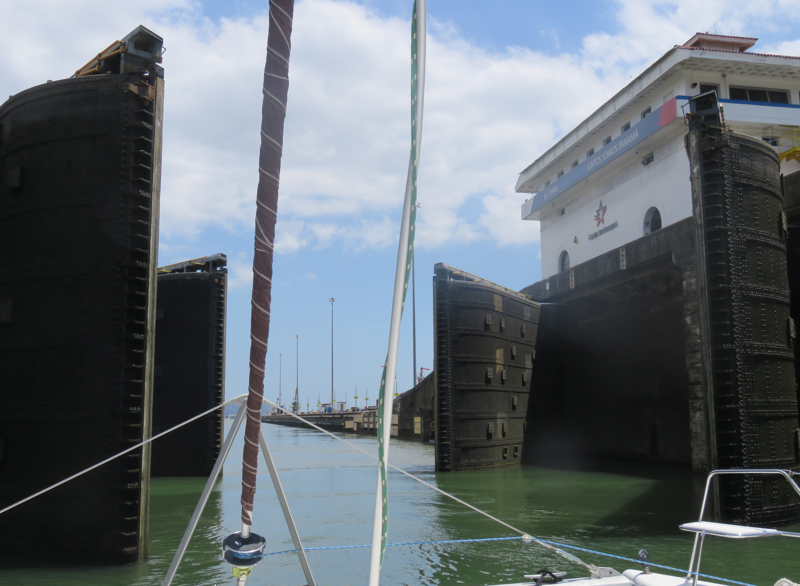
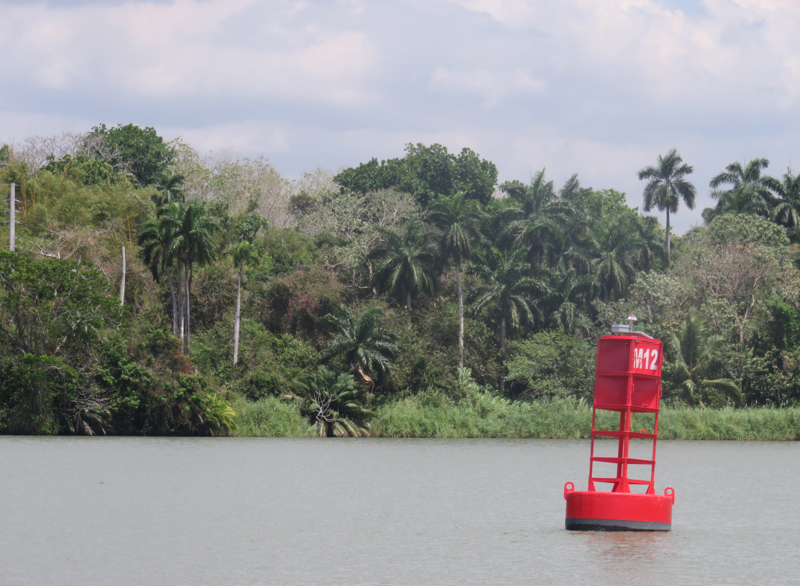
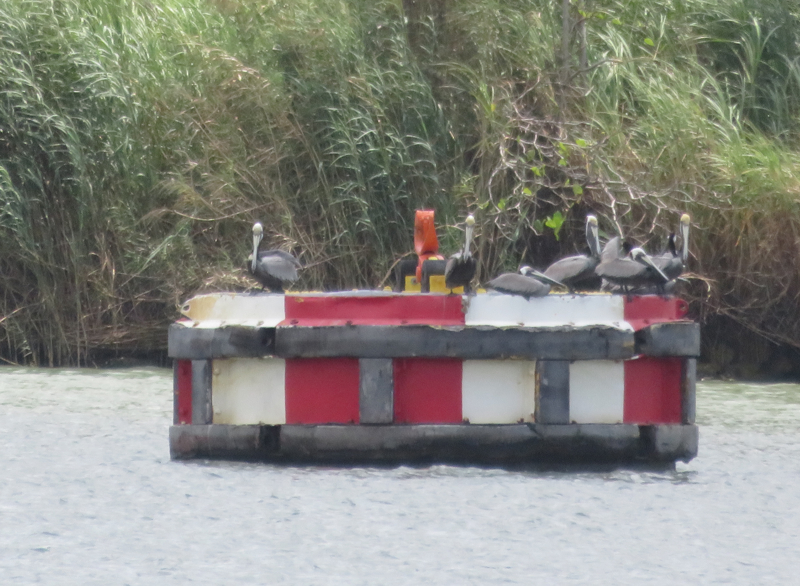
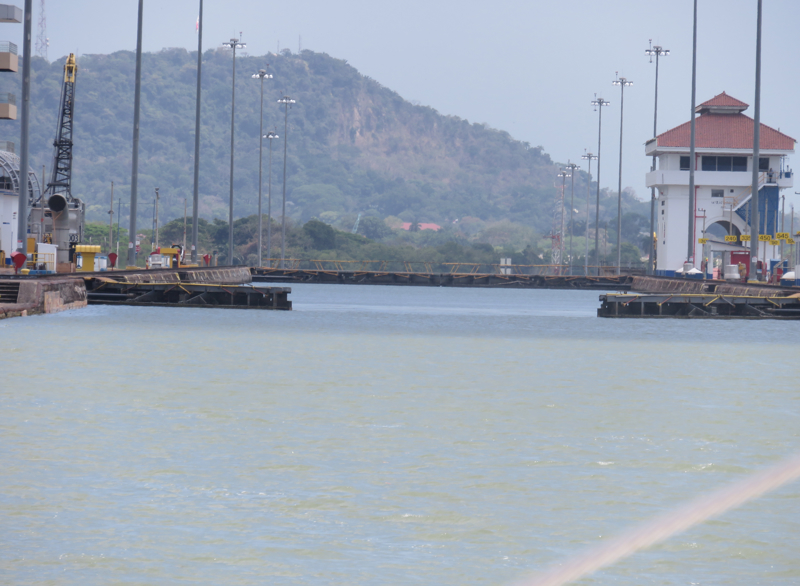

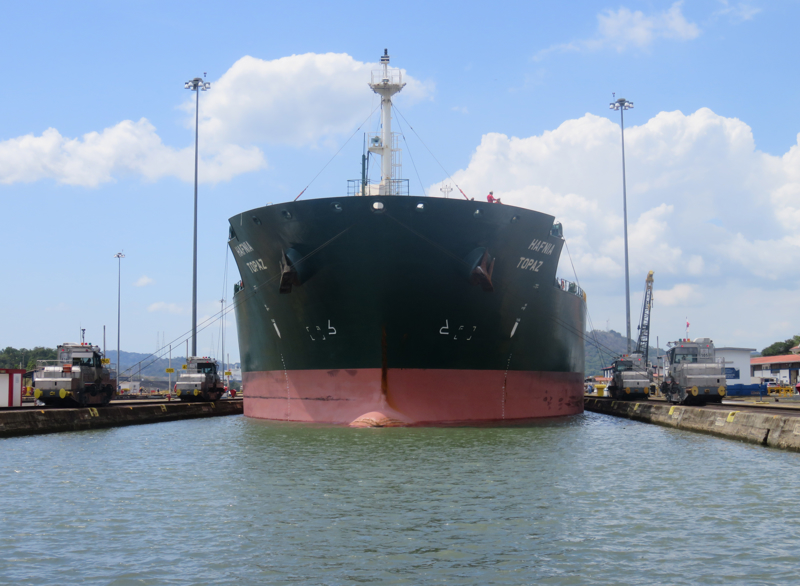

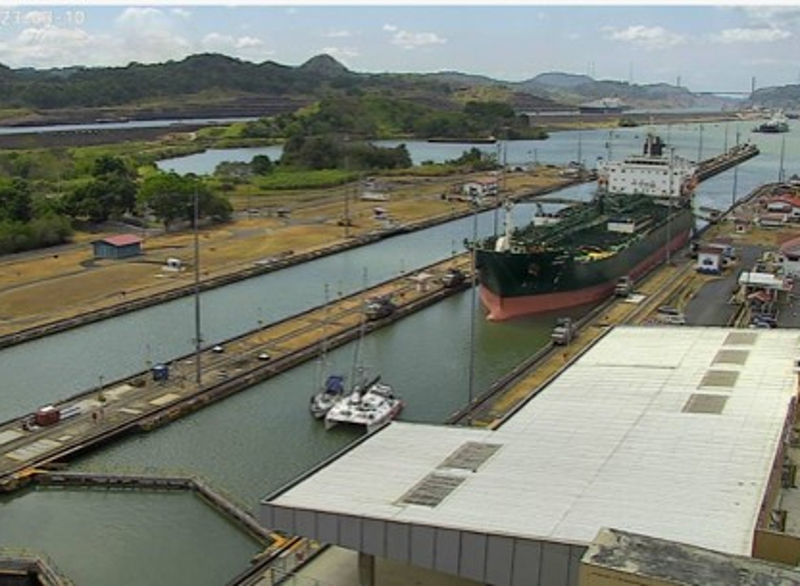
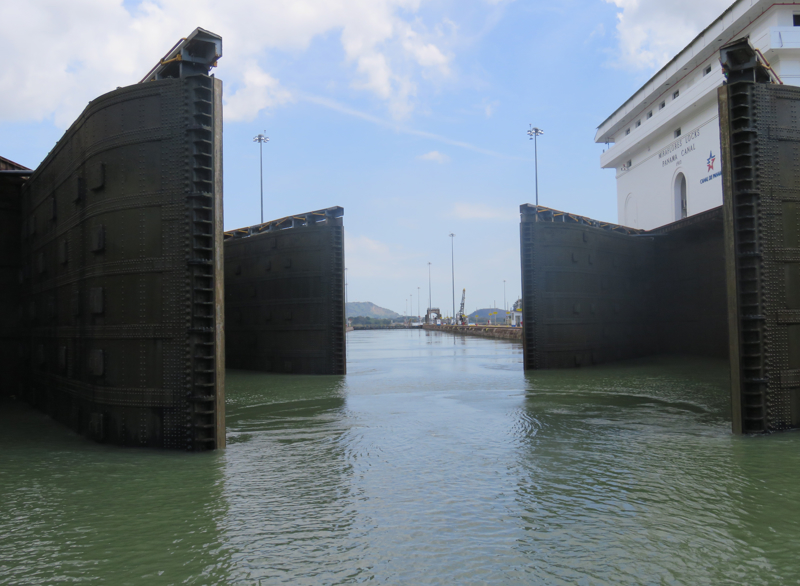

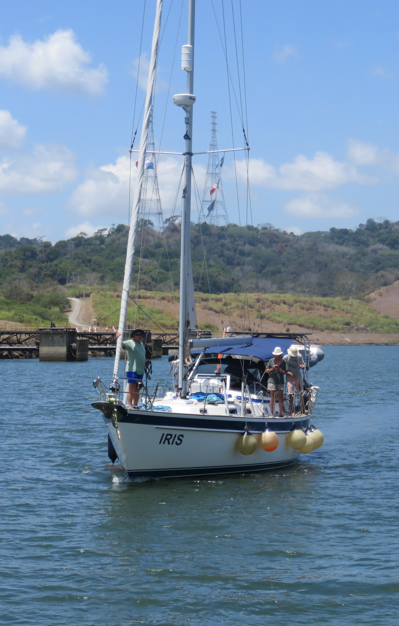
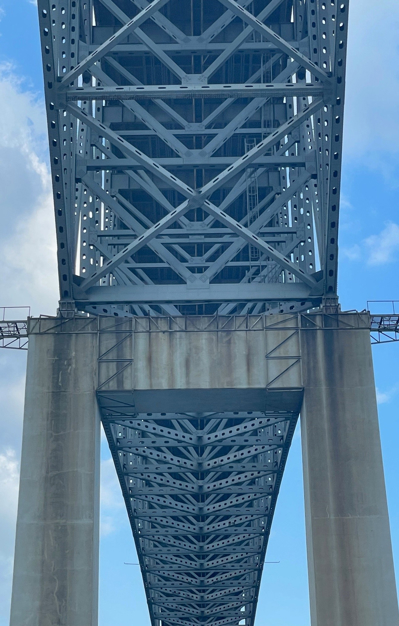
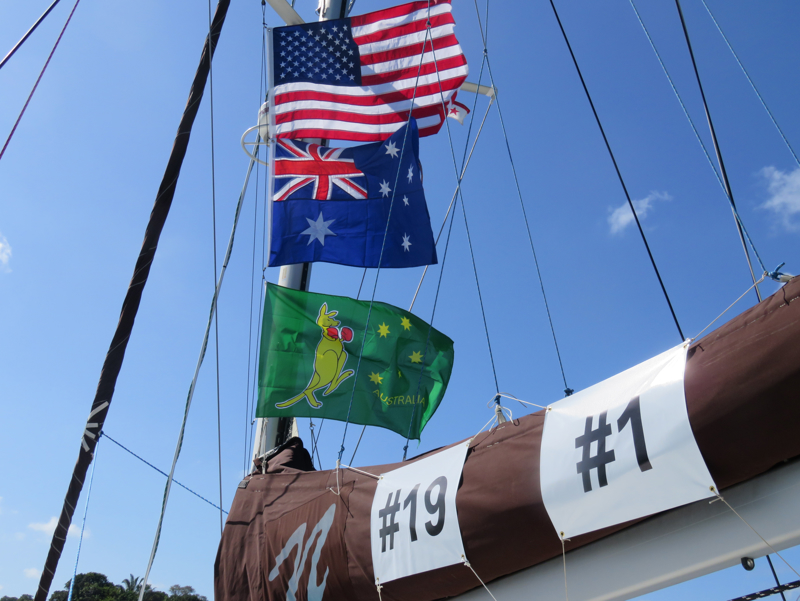
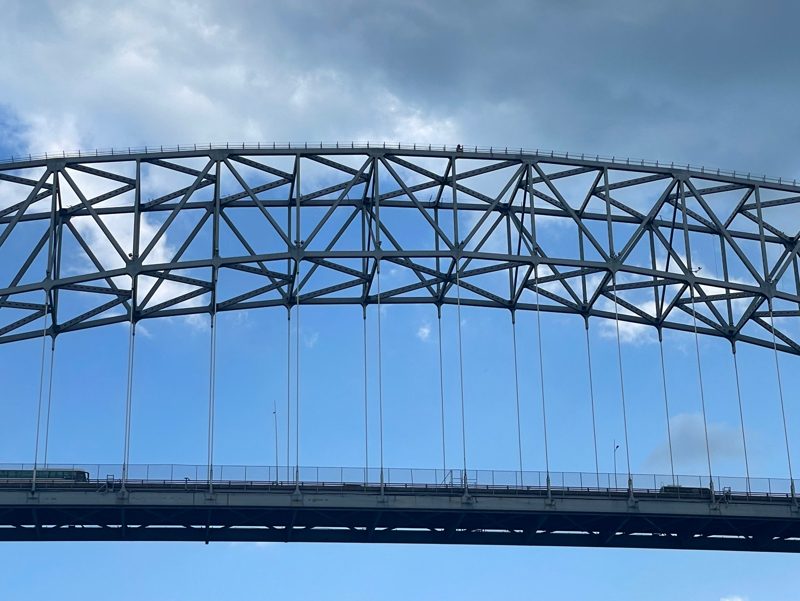
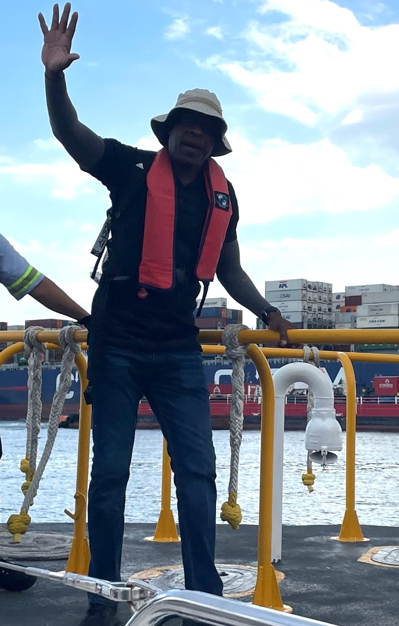
2:41 The gates open. We are through! We disconnect with Iris and send her on her way to the rest of their (Koo and Kirsten) circumnavigation back to Denmark. They left Denmark about 18 months ago, expect to be home in another 2 years. Maybe we will see them again somewhere along the way.
3:09 BRIDGE OF THE AMERICAS is a road bridge spanning the beginning of the Panama Canal. Completed in 1962 with a 201’ clearance, looks a bit like an old metal erector set – very cool. And we are in the PACIFIC OCEAN!
3:20 A boat came to pick up Alex and Manuel at the Port of Balboa – plus all the lines and fenders.
3:41 The pilot boat “Aguja” arrives to pick up Edwardo closer to Panama City.
Motoring along, we see: so many more freighters (that’s getting a bit boring), lots of small fishing boats, a large variety of anchored sailboats, several rafted groups of boats, lots of birds, the beautiful palm tree lined causeway, and various wonderful views of the Panama City skyline.
We set anchor at Isla Flamenco, a beautiful Panama City harbor in the Pacific Ocean, and then it rains. Perfect timing. About an hour later Iris arrives to anchor in the bay.
4:32 Time for our Friday night Panamanian Brandy Oldfashioneds.
Atlantic Ocean this morning. Pacific Ocean tonight.
Buenos Noches!
XO XO Gma & Gpa
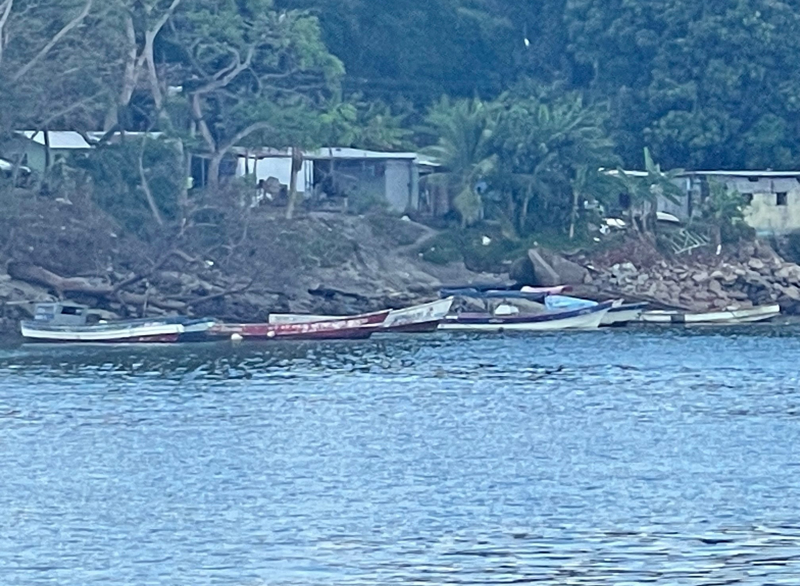
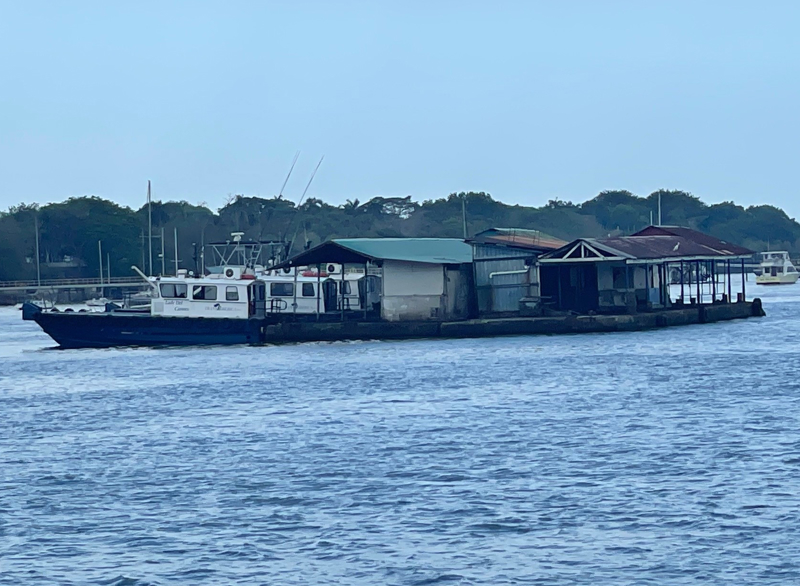
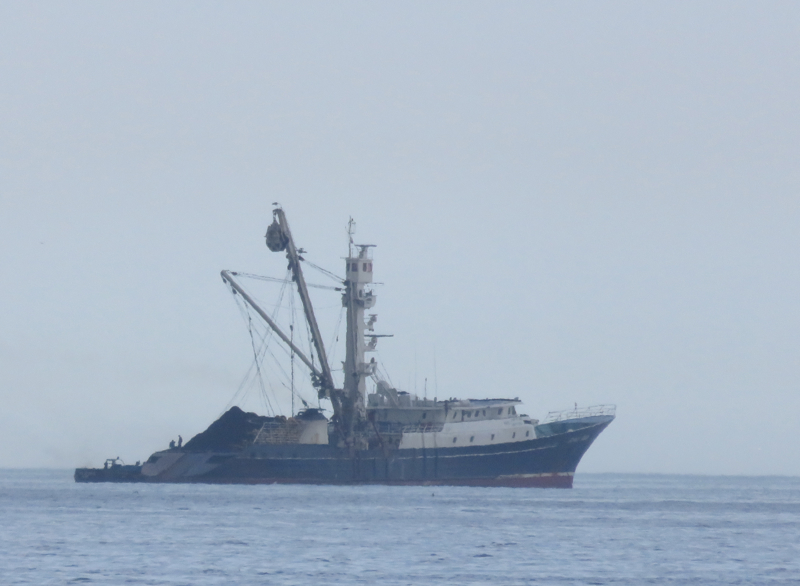
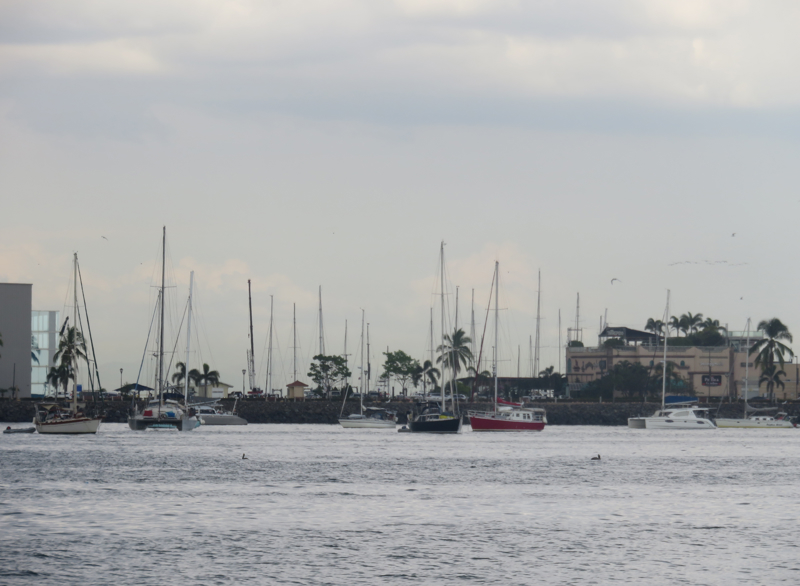
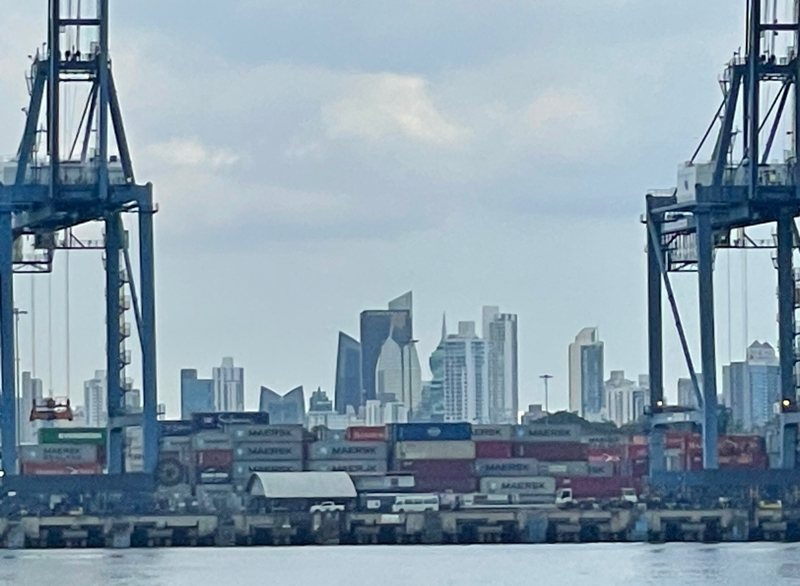

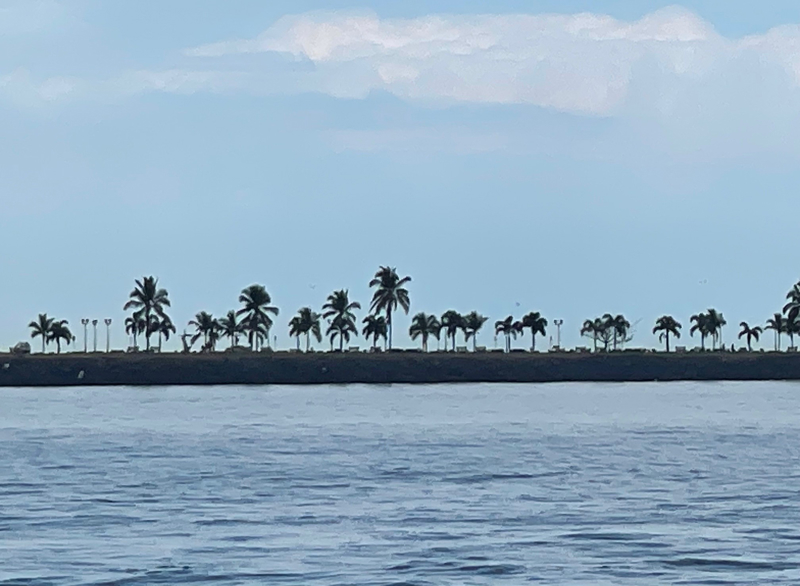

1.
Countdown
2.
...and We're OFF!
3.
...and waiting.
4.
Sailing Away!
5.
The San Blas
6.
Panama
7.
The Panama Canal
8.
The Transit
9.
Panama City
10.
27 Days at Sea
11.
The Marquesas
12.
Tuamotu Archipelago
13.
Moorea
14.
Tahiti
15.
On Vacation
16.
Raiatea
17.
Taha'a
18.
Huahine
19.
More Moorea
20.
Tahiti 2
21.
Sail On, Sailor
22.
Rarotonga
23.
Niue
24.
Vava'u
25.
Savusavu, Vanua Levu
26.
Yasawa Islands
27.
Viti Levu
28.
Viani Bay
29.
Taveuni Island
30.
Fiji Time
31.
Cyclone Season
32.
New Zealand
Share your travel adventures like this!
Create your own travel blog in one step
Share with friends and family to follow your journey
Easy set up, no technical knowledge needed and unlimited storage!
© 2025 Travel Diaries. All rights reserved.